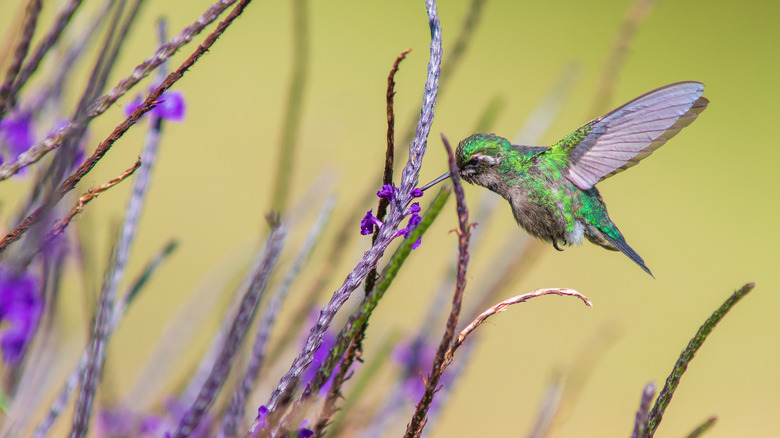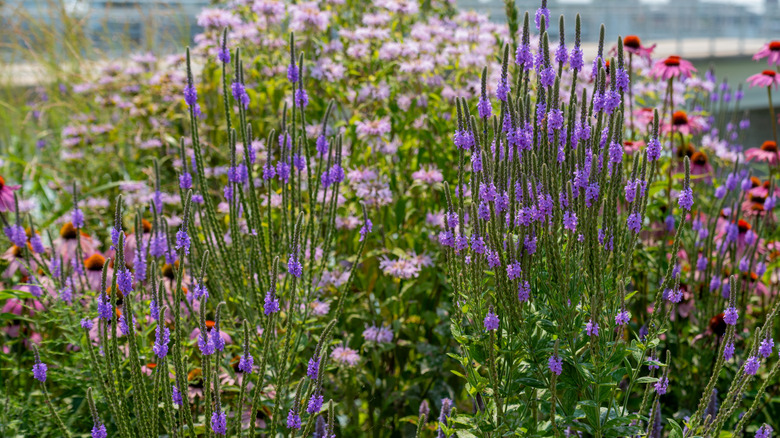Attract More Hummingbirds To The Garden With A Flower That Reseeds Itself
If you're the sort of gardener or birdwatcher who is always feverishly in search of the best way to attract hummingbirds, or how to make a hummingbird feeder, or what plants to include in a hummingbird garden, you may have run across a plant called hoary vervain (Verbena stricta). Residents of the central United States in particular may have even encountered the pretty purple blooms of this native plant on a nature walk or growing in disturbed soil at a construction site or roadside. Depending on your location, with its drought hardiness, ease of care, self-sowing behavior, and abundant nectar, hoary vervain might just be the perfect addition to your native pollinator garden.
So what makes hoary vervain a hotspot for hummers and other pollinators? In general, hummingbirds tend to favor tubular flowering plants to accommodate the shape of their bills (though they will feed from other shapes, as well) and tightly-spaced flowers, and hoary vervain's stalks of densely-clustered tubular blossoms certainly fit the bill. Besides hummingbirds, you will likely see many species of bees (there's even a species of bee that specializes in verbena!), butterflies, and other insect nectar-feeders visiting your hoary vervain patch. In fact, the fuzzy, grayish-appearing — or "hoary" — leaves might also attract some other welcome visitors, as it's a favorite plant for common buckeye butterflies to lay their eggs, and the caterpillars feed on the leaves.
Growing and caring for hoary vervain
Considered hardy in USDA Zones 4 through 8, hoary vervain tends to prefer full sun and well-drained soil, though it will tolerate a range of soil types and moisture levels. It's an extremely low-maintenance plant that is resistant to herbivore grazing and tolerant to drought, but does respond poorly to overwatering. A perennial, it blooms every year in mid- to late-summer for about six weeks.
As mentioned earlier, hoary vervain has yet another trait that makes it a light lift in your garden: it's one of those convenient flowers that reseed themselves to form colonies, which means you can easily turn a little bit of vervain into a lot of vervain without doing much at all. You will still have to exercise a bit of patience after planting hoary vervain from seed, as it typically won't flower until the second year after it sprouts. Once the colony has established itself, make sure to keep up with deadheading spent flowers if you want to control how far it spreads.

